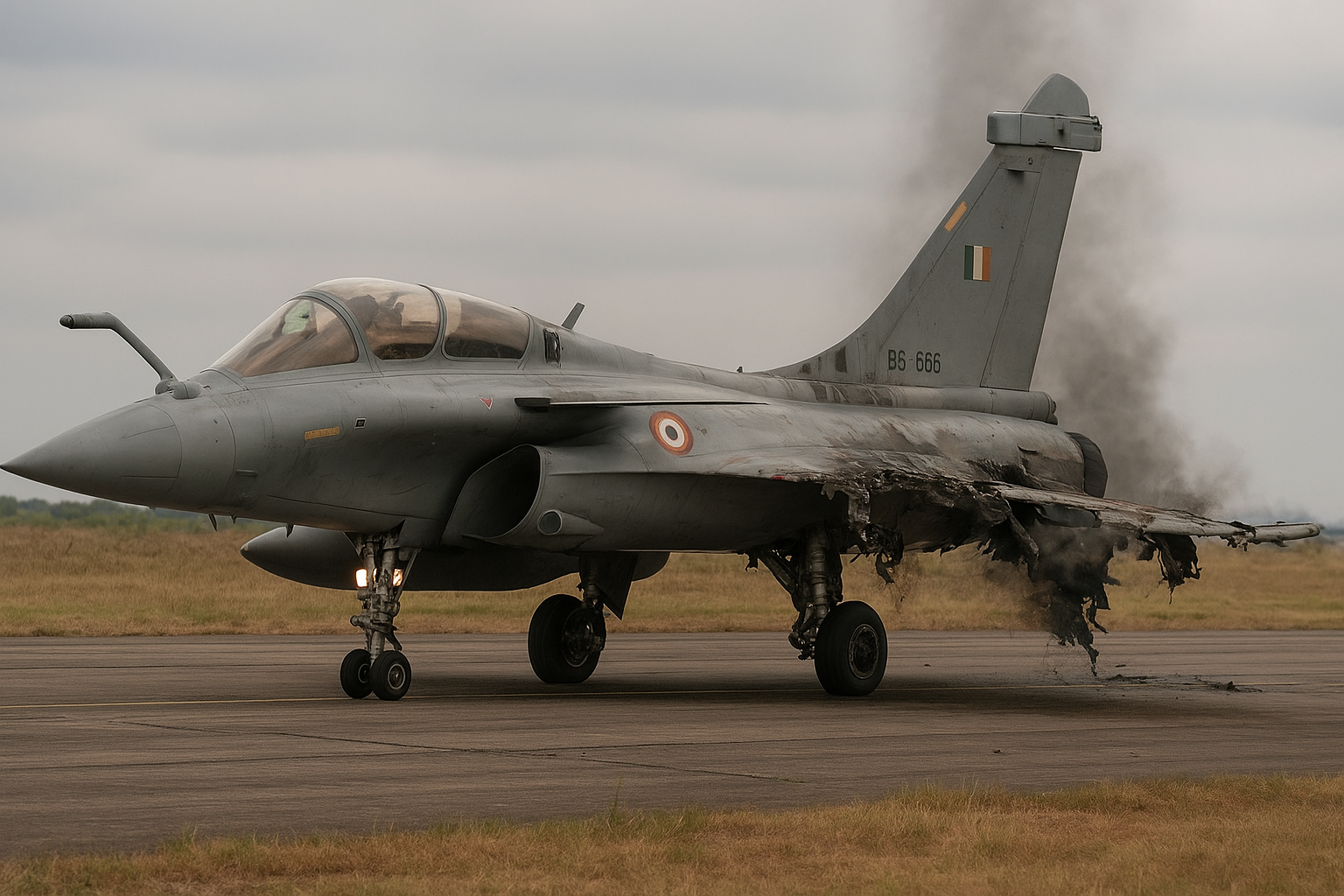As reported by IDRW, a single-seat Indian Air Force (IAF) Rafale fighter recently survived a Pakistani air-to-air missile strike, underscoring the aircraft’s high survivability and resilience in combat, according to French defence media outlet avionslegendaires.net. The incident is said to have strengthened India’s plan to expand its Rafale fleet to 100 aircraft.
The report claims that during recent hostilities, a Pakistani missile of Chinese origin targeted the Rafale. Despite sustaining a hit, the French-built fighter returned safely to its base, saving the life of its pilot. This successful return highlights the Rafale’s rugged design and operational durability—key factors influencing Indian defence planners.
India currently operates 36 Rafale fighters, inducted between 2020 and 2022 under a €7.8 billion deal with France’s Dassault Aviation. The aircraft are deployed at frontline bases in Ambala and Hasimara, covering both western and eastern sectors.
Equipped with advanced systems such as the Thales RBE2 AESA radar, improved Front Sector Optronics (FSO), DASH Helmet Mounted Display, and SPECTRA electronic warfare suite, the Rafales are tailored for both air superiority and deep-strike missions. Their armament includes MICA and Meteor air-to-air missiles and SCALP-EG cruise missiles, providing versatile combat capabilities. Analysts note that the aircraft’s SPECTRA EW suite likely disrupted the incoming missile’s radar seeker, allowing it to return to base despite the strike.
The incident has reportedly played a decisive role in convincing Indian defence planners that a larger Rafale fleet would ensure operational superiority and combat-proven reliability. India’s planned acquisition of 100 additional Rafales—potentially a mix of single-seat and twin-seat variants—would mark one of the largest fighter procurement programs in the country’s history, further solidifying defence ties with France and Dassault Aviation.













